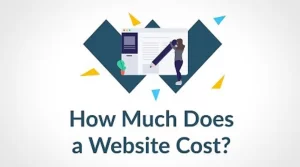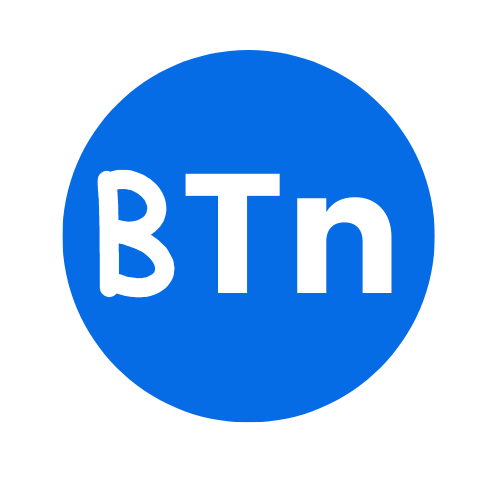“The cost of doing business” has been a phrase for decades, but today, you’re going to find something new introduced to the mix:
Table of Contents
Having a website.
It sounds silly, but in this digital age, if you hope to take your business beyond the surrounding ten meters, you need to have a website. Having an online presence enables your business to reach a city-wide, country-wide, or even global audience that truthfully just isn’t possible without a website. We’re talking about having customers from the other side of the world.
But while having a website sounds excellent, there’s a problem. A big one, glaring at you right in the face:
The Problem (And How You’re Going to Solve It)
No matter how great an entrepreneur you might be, you’re not designing a website from scratch by yourself overnight. At least not without a web design framework.
A website involves taking care of hundreds of different resources and factors, both front-end and back-end. And that’s exactly what a web-design framework allows you to do:
These simplified design frameworks let you take a sequential, ordered view to design your website. Instead of manually coding everything, you’re going to choose your preferences, throw a few lines of custom code in, and have an attractive, practical, and functional website up and running!
Do I Really Need A Web Design Framework?
The Multiple Advantages of Using One
At this point, you’d usually see long paragraphs of text desperately trying to convince you that you really need a web design framework.
We’re not going to do that.
Below, you’re going to find just a few of the many advantages of using a web design framework, like:
- Boosting Performance
Most web design frameworks are designed with many custom features that come built into the framework.
Frameworks also significantly speed up loading times for a website, which is the best way to make your website appeal to customers, because, well… who likes waiting for a website to load?! - Eliminating Human Error
Framework methodologies come with the best software engineering practices already built-in.
That sounds purposefully vague, doesn’t it? We’ll make it simpler.
One of the best things about web design frameworks is that they come with built-in testing mechanisms that let you test your code right then and there. - Improving Security Practices and Data Security
This part goes without saying: using a web design framework vastly improves your website’s security.
If you thought having a slow website was bad, wait till you see one with frequent data breaches. People will put up with loading times, but give them the first hint that their data’s at risk, and you’re out of the equation.
How You're Going to Choose the Web-Design Framework That's Right for You
Why wait? We’re diving right into our picks for The Top web design frameworks that you must try! with choices available for both front-end frameworks and back-end ones:
1. Angular (Front-end)
Angular isn’t just a famous web design framework. It’s the front-end framework that all others are judged by, being one of the most prominent frameworks you’ll find today.
Introduced in 2009, this framework saw illustrious use for years before being transferred from Javascript to Typescript.
To everybody’s surprise, it only got better and is now used by hundreds of thousands of websites worldwide to develop dynamic front-end web pages.
It’s an inclusive framework, which means while it comes with libraries, directories, and many other components built in, it’s also marginally harder to learn.
Lastly, it uses the MVC (Model-View-Controller) architecture, the common standard for web design.
Advantages
● Varied AngularJS development services,
● Supports commonly used MVC architecture,
● Two-way data binding.
Disadvantages
● Slower processing than some web design frameworks,
● It’s also harder to learn and takes a couple months to get the hang of.
2. React (Front-end)
React comes in as a much-loved alternative to Angular, used by many people worldwide for its most unique feature:
Unlike most web design frameworks, React also supports the development of mobile applications. This means React packages can be used for more than developing dynamic client-side web pages.
This framework also has many other features to streamline development, like effortless interaction with API and several integrated libraries.
Advantages
- Easily integrates with other libraries,
- Supports mobile app development,
- Virtual DOM streamlines manipulation in documents.
Disadvantages
- Complicated structure that’s hard to wrap your head around.
- You’ll also find that the documentation section isn’t very well organized.
3. Django (Front-end + Back-end)
A Python-based framework that’s been a developer favorite for years, Django is primarily a business-website development framework based on the MVT (Model-View-Template) architecture.
Compared to other frameworks like React, Angular, and Laravel, Django offers faster web page development suitable for developing vast infrastructure.
It also offers several features like messaging, custom validation, and authentication processes for ease of use.
With all of that, it’s no surprise that Django is one of the most in-demand development frameworks out there.
Advantages
- Django offers faster web page development,
- Comes with a built-in authentication tool,
- Documentation is organized and easy to sort through,
- And it also provides secure data handling across a variety of processes.
Disadvantages
- Django is brutal to learn and takes even longer than AngularJS.
- Also, like Angular, it comes with a slow processing speed.
4. Express (Back-end)
If you know back-end developers, we’ll bet you money they’ve heard of Express.
A back-end development framework that’s quickly been skyrocketing in both popularity and use, Express is a fast and minimalist framework utilizing the quick performance of NodeJS.
It’s compatible with many other frameworks like Kraken and Loopback. It is pretty flexible, supporting the development of robust, complete applications.
The one drawback we’d complain about is that it’s vague to use and might not be the back-end framework beginners should use.
Advantages:
- Uncluttered view and minimalist design,
- Offers fast processing speeds compared to other frameworks,
- It can be used for handling extensive back-end operations,
- And it’s compatible with other frameworks.
Disadvantages
- Frequent backward-incompatible API changes.
Asynchronous programming makes it hard to keep code uniform
5. Laravel (Back-end)
Laravel is a back-end development framework using MVC architecture and makes up for what it lacks in streamlined performance by being a haven for beginners worldwide.
It’s got over a thousand videos on developing web pages in the Laravel ecosystem and hundreds of tutorials on using its PHP technology to build websites.
The best part about Laravel is that it comes with out-of-the-box API support, meaning you’re wasting no time getting right to work.
You will, however, have to put up with slight reductions in performance, as this web design framework is relatively young compared to the others on this list.
Advantages
- Comes with API support out-of-box,
- Includes thousands of tutorials on using PHP development frameworks,
- Integrated mail services for effortless development,
- And it consists of the newest PHP features.
Disadvantages
- Laravel doesn’t support mobile app development.
- Quite staggeringly, it also has no support for payment gateways.
Using Web Design Frameworks: The Takeaway
Today, having a website is more than necessary if you’re managing a business. And ask anybody: if you’re making a website, using a framework is the best way to do it.
The proper framework can make or break your website. In fact, if you choose the right framework, they even allow you to significantly boost your website’s performance. So, in the end, our best advice for you is: choose wisely!







Thank you for the sensible critique. Me and my neighbor were just preparing to do some research on this. We got a grab a book from our local library but I think I learned more from this post. I’m very glad to see such fantastic info being shared freely out there.